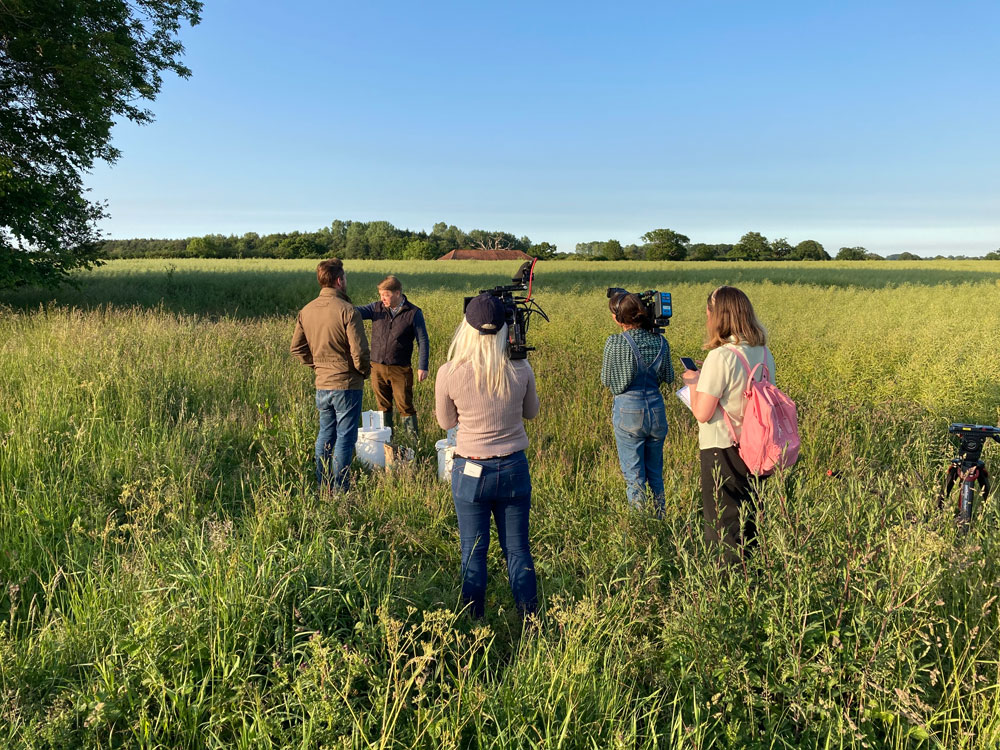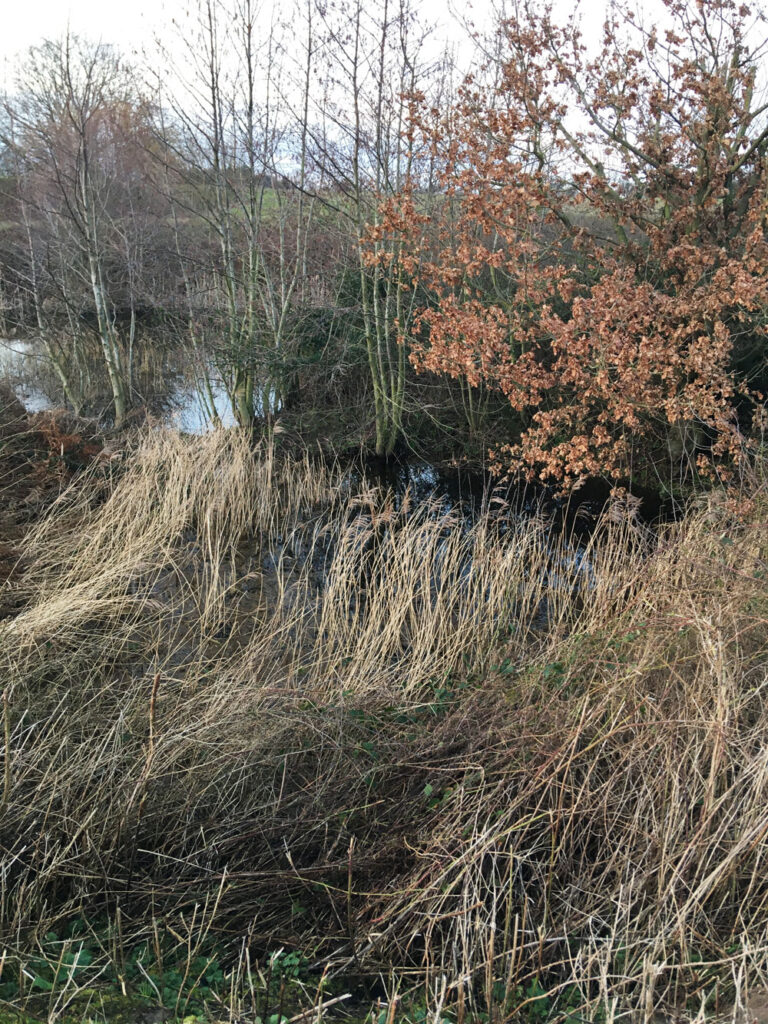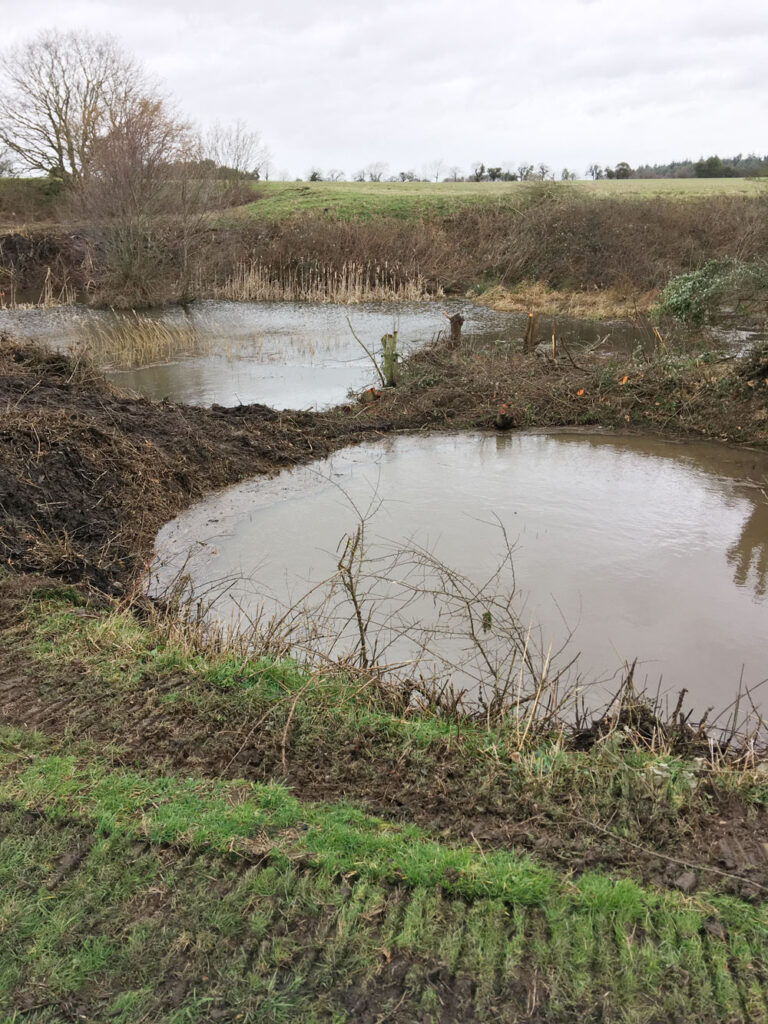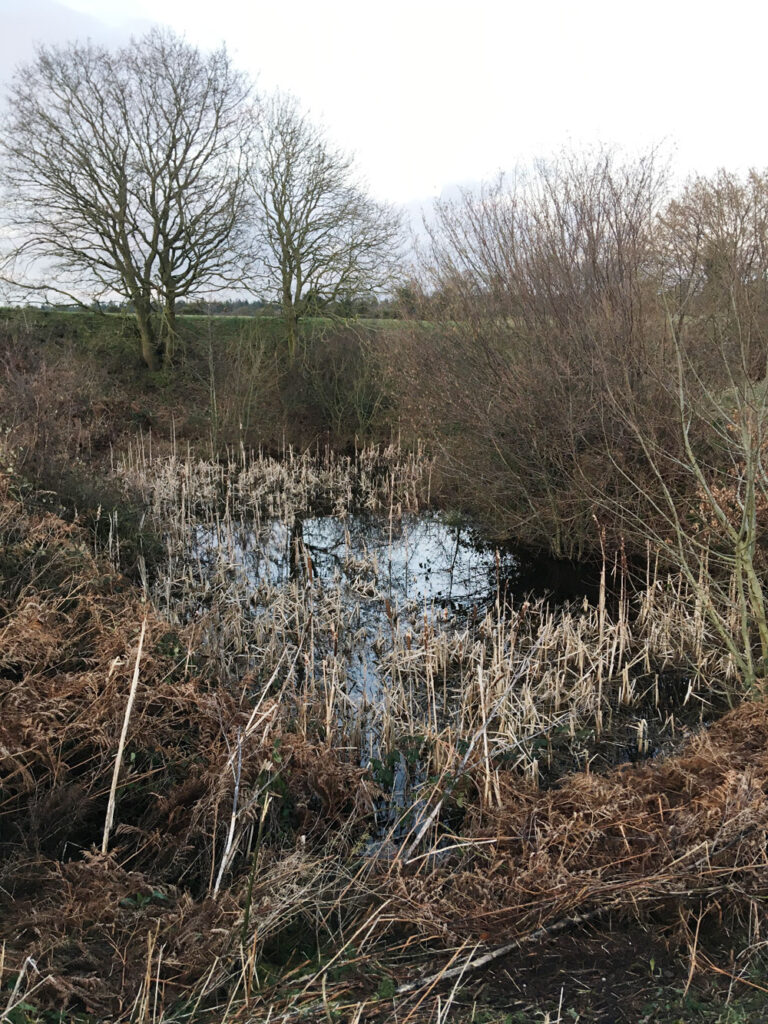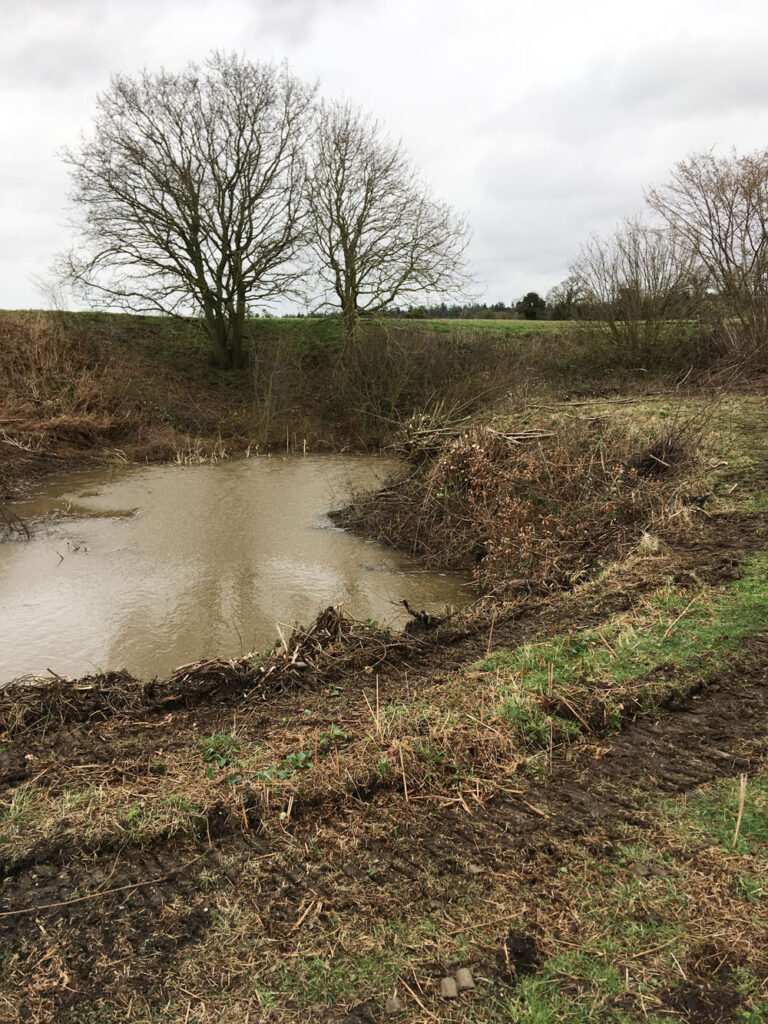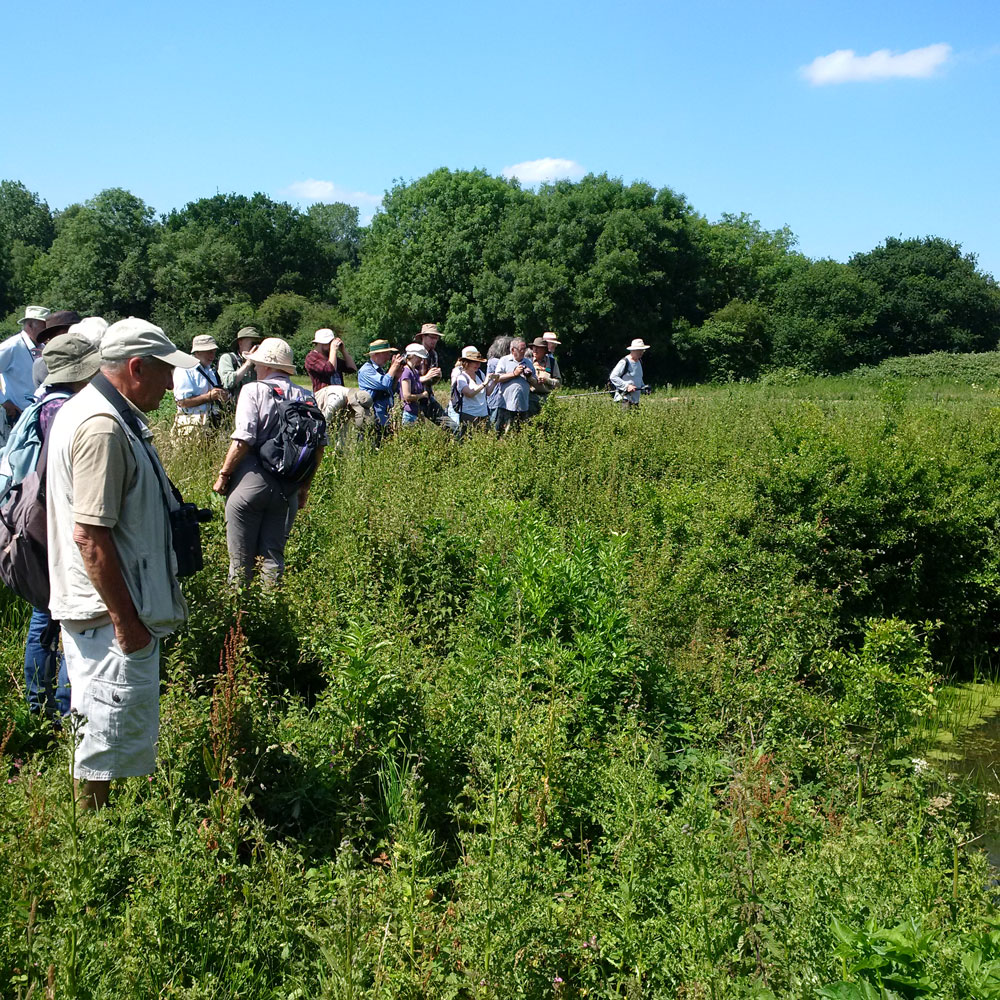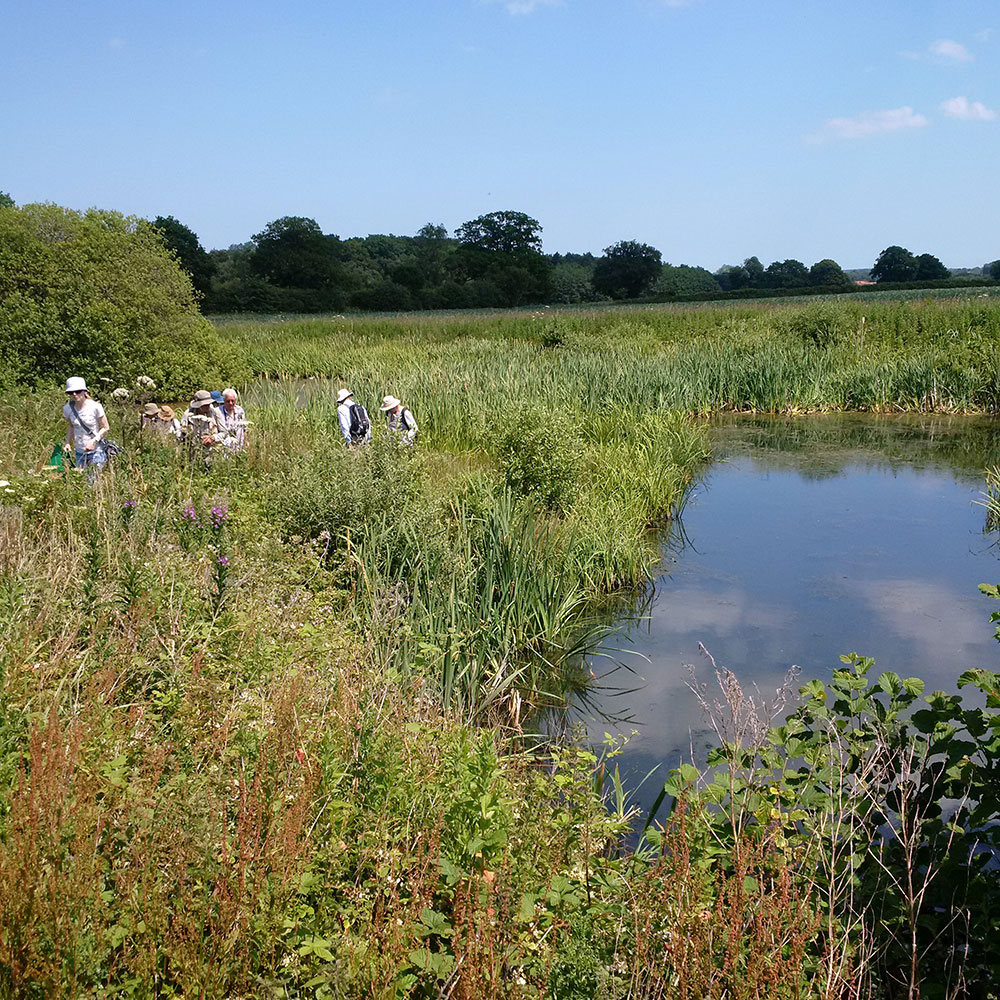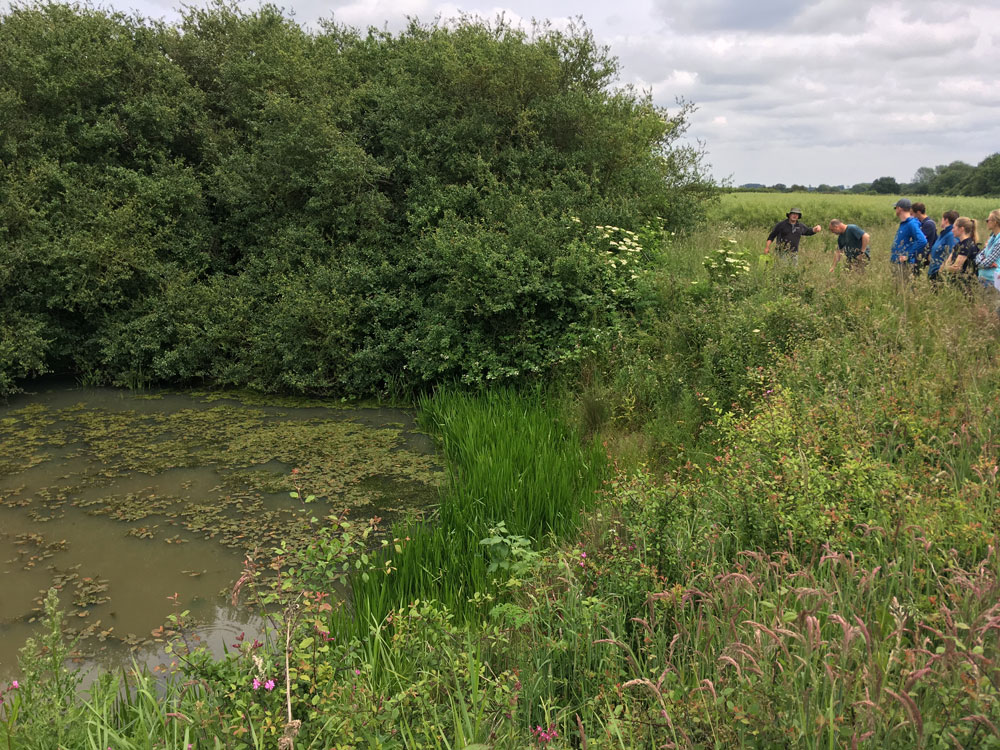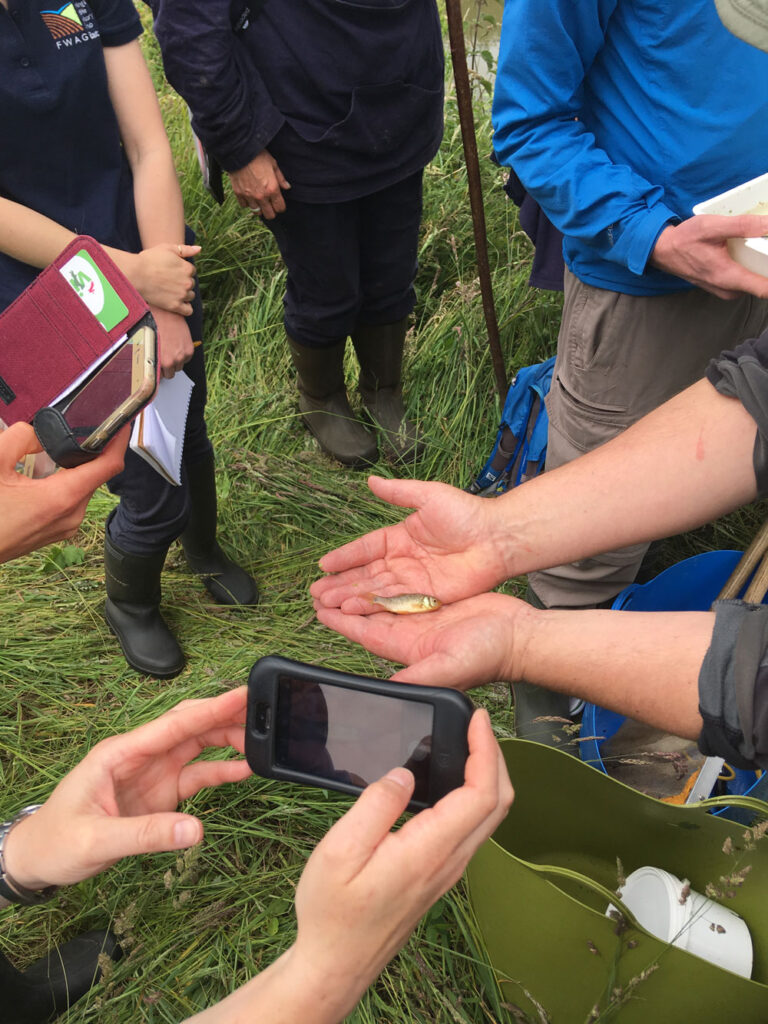“In among the rippling barley lies a crystal pool….”
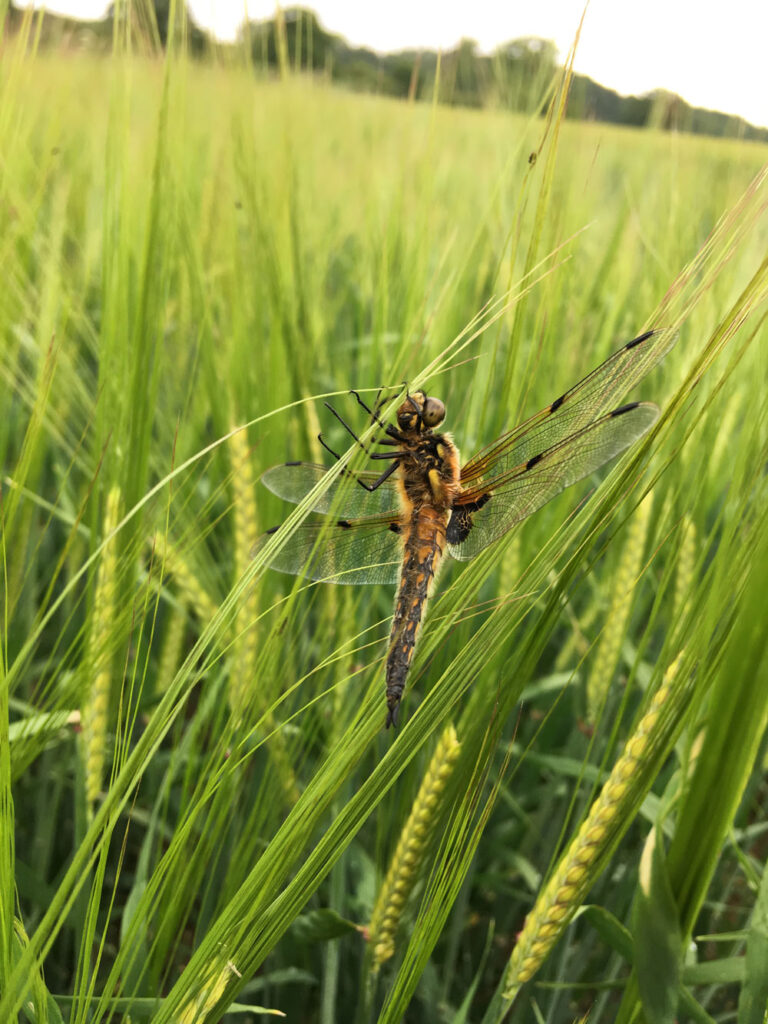
Our aim is to get sunlight and oxygen to our ponds. This helps the plants thrive which improves the water quality as well as supporting healthy populations of beetles, newts, fish and birds. Most of our ponds now have clear water and are largely free of overhanging trees.
Pond management is about regular (every 3-4 years) sawing to keep woody growth under control. It is better to coppice rather than pull out the roots as the old stools this creates are a valuable habitat for invertebrates. Equally some of the cut stems can be piled on the grass margin around the ponds as another invertebrate refuge (the grass margin is a spray buffer and it is currently not an agri-environment requirement to keep the grass clear). Longer grass is preferable to regular mowing. In our scheme the buffer has to be a minimum of 6m – however increasing it up to 10m is better for the environment and reduces the chance of accidental non-compliance by gradual encroachment by farm machinery. We’ve calculated that increasing the buffer from 6m to 7m on a typical pond results in a lost agricultural profit of £10 per year. However there may be resulting benefits through pest control by beetles emerging from the pond that offset this – but that is hard to measure.
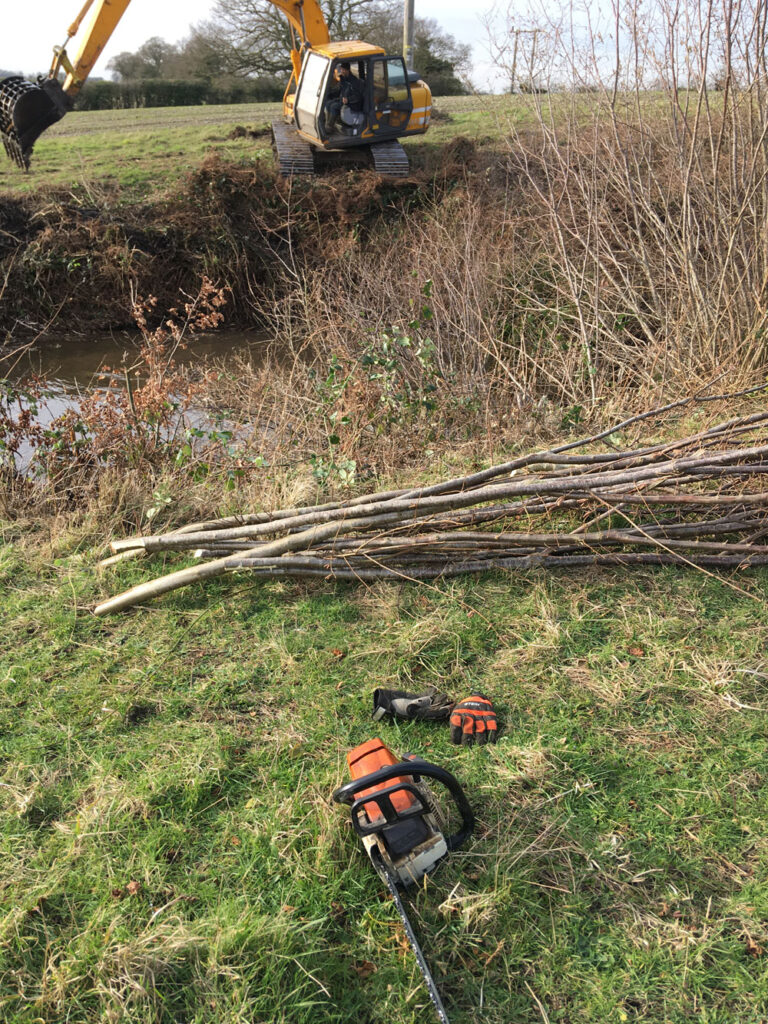
Less frequently (every 5-10 years) it is necessary to use a digger. This might be a light scrape (for example to keep the centre of the pond clear of encroaching bulrush) or major dredging to remove a buildup of leaves and silt. Care must be taken not to penetrate any impermeable clay layer and try to keep to the original contours of the pond. It is best to time the digger work so that the ground is not too wet and there are no crops in the surrounding field (so the dredgings can be spread on the land). The digger operator we use is called Dom Arnold who is very experienced at pond work – he uses both a regular bucket scoop as well as his own bespoke extension arm – both seen here in action in February 2020.
Management (September-March) can look quite brutal but the pond quickly recovers.
Pond tours, student field trips and occasional filming take place in the summer when the ponds (and the farm) look much prettier. The contrasts between managed and unmanaged ponds are stark as are the differences in the shape of ponds, how steep their banks are and the different plants and animals each pond supports.
